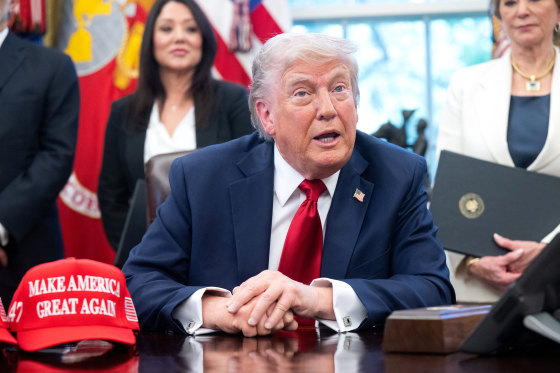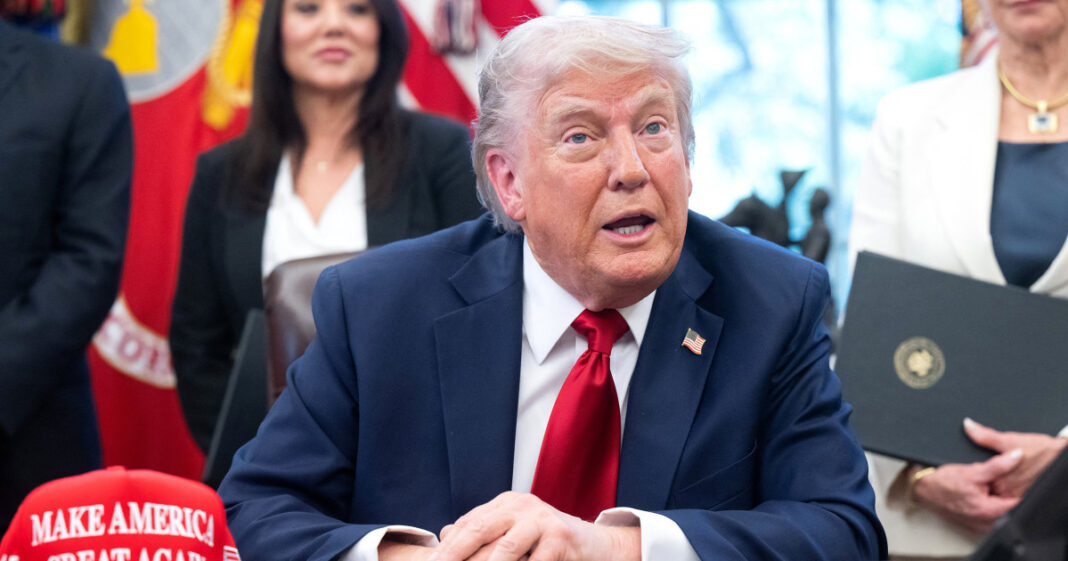## International Tensions Flare: Trump’s Wrath on Putin and a Stalling Trade War
The world stage is set for a dramatic performance, with the Trump administration at the center.
From fiery outbursts directed at Vladimir Putin to a stalemate in crucial tariff negotiations with China, the latest developments paint a picture of escalating global tensions. NBC News is tracking every twist and turn, as the president’s unpredictable actions and the ever-shifting geopolitical landscape collide. Buckle up, because things are about to get bumpy.

Tariff Negotiations Stalemate
Key Sticking Points
The US-China trade negotiations have reached a critical juncture, with both sides seemingly entrenched in their positions. The primary sticking points include:
- Structural Issues: The US demands structural reforms in China’s economic practices, addressing issues like intellectual property theft, forced technology transfer, and state-subsidized industries.
- Tariffs: While both sides have imposed tariffs on billions of dollars worth of goods, the US continues to seek further tariff reductions from China, while China pushes for the removal of existing tariffs.
- Agricultural Trade: China has reduced its purchases of US agricultural products, a key concern for American farmers. The US wants China to commit to significantly increased purchases of soybeans, pork, and other agricultural goods.
- Further Escalation: The possibility of additional tariffs and retaliatory measures looms, potentially triggering a full-blown trade war that would disrupt global supply chains and depress economic growth.
- Market Uncertainty: Businesses face heightened uncertainty, making it difficult to plan investments and make long-term decisions. This uncertainty can stifle investment and innovation.
- Consumer Impact: Tariffs ultimately increase prices for consumers, leading to a decline in purchasing power and potentially impacting consumer confidence.
Potential Economic Consequences
The prolonged impasse in the trade negotiations carries significant economic consequences for both countries and the global economy. A failure to reach a deal could lead to:
Global Impact
Ripple Effects
The US-China trade war has already sent ripples through the global economy, impacting countries that rely on trade with both nations. Some of the key global consequences include:
- Weakened Global Growth: The International Monetary Fund (IMF) has warned that the trade war could shave off 0.5% of global GDP growth.
- Disrupted Supply Chains: Many global companies have complex supply chains that rely on both US and Chinese inputs. The trade war disrupts these chains, leading to delays, increased costs, and potential production shortages.
- Currency Fluctuations: The trade war has contributed to volatility in global currency markets, with the US dollar strengthening against other currencies. This can impact the competitiveness of US exports and make imports more expensive.
International Relations
The trade war has also strained international relations, with many countries caught in the crossfire. The US has increasingly used trade as a tool of foreign policy, imposing tariffs on allies and adversaries alike. This has raised concerns about a fragmentation of the global trading system and a decline in multilateral cooperation.
Alternative Strategies
Diplomatic Avenues
Despite the deep divisions, there are potential avenues for de-escalating the trade tensions and finding a mutually beneficial agreement. Some possible strategies include:
- Phased Approach: Negotiating a phased agreement that addresses some of the key issues while allowing for continued dialogue and progress on other points of contention.
- Third-Party Mediation: Enlisting the help of a neutral third party, such as the World Trade Organization (WTO) or a regional organization, to facilitate negotiations and bridge the gaps between the two sides.
- Confidence-Building Measures: Implementing confidence-building measures, such as suspending new tariffs or agreeing to collaborate on specific issues, to create a more stable and predictable environment.
- Investment in Innovation: Collaborating on research and development projects in areas like clean energy, artificial intelligence, and biotechnology can drive economic growth and create new opportunities for both sides.
- Infrastructure Development: Working together on infrastructure projects, such as transportation networks and energy grids, can improve connectivity and facilitate trade and investment.
- Addressing Global Challenges: Cooperating on global challenges, such as climate change, pandemics, and cybersecurity, can promote stability and prosperity for all.
Focus on Mutual Gains
A successful resolution to the trade dispute will require a shift in focus from zero-sum competition to a more cooperative approach that recognizes the shared interests of both countries. Some potential areas for mutual gain include:
Trump’s Verbal Attacks on Putin: A Shift in Rhetoric?
The Nature of Trump’s Criticism
President Trump’s recent public criticism of Russian President Vladimir Putin marked a departure from his previous stance of downplaying US-Russia tensions and praising Putin’s leadership. Trump accused Putin of orchestrating election interference, supporting the Taliban, and engaging in hostile cyberattacks. These accusations represent a significant escalation in rhetoric and raise questions about the future of US-Russia relations.
Foreign Policy Implications
Trump’s statement has the potential to significantly impact US-Russia relations. The sharp rebuke could further strain an already tense relationship, making it more difficult to cooperate on issues of mutual interest, such as nuclear non-proliferation and counterterrorism. It could also embolden Putin, leading to further Russian aggression and undermining efforts to stabilize the international order.
Domestic Political Context
Trump’s public criticism of Putin may also be driven by domestic political considerations. Facing criticism from within his own party and from Democrats for his perceived leniency towards Putin, Trump may be attempting to appease his base and bolster his image as a strong leader who stands up to adversaries.
Conclusion
As the Trump administration continues to navigate a tumultuous geopolitical landscape, today’s events paint a stark picture of the challenges ahead. Trump’s public rebuke of Putin, coupled with the stalled tariff negotiations with China, exposes the fragility of international relations and the potential for further escalation. The President’s increasingly assertive stance on Russia, while demonstrating a willingness to stand up to perceived aggression, risks further straining already tense relations. Meanwhile, the impasse with China over trade underscores the deep-seated economic and ideological differences between the two superpowers, casting a long shadow over global economic stability.
These developments are not isolated incidents but rather symptoms of a larger trend: a world increasingly marked by uncertainty and division. The question remains: will the Trump administration be able to navigate these complexities and forge a path toward a more stable and cooperative international order, or will its actions further exacerbate existing tensions and push the world toward a more dangerous precipice? The answers to these questions, and the consequences that follow, will shape the global landscape for years to come.
One thing is clear: the world is watching, holding its breath as a single presidency grapples with the weight of its decisions, decisions that reverberate across continents and touch the lives of billions.
